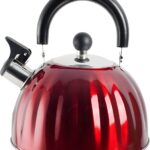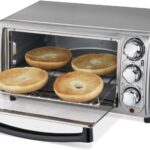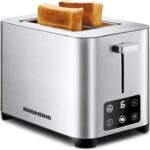Mastering the Art of Bulk Cooking: Tips for Storing Leftovers
When I am in the mood and have time I try cooking in bulk and storing the leftovers so that I can save time on preparing the next meal. It is so convenient to have something ready in the refrigerator to defrost and not have to stand for hours preparing a meal.
It can however, be a challenge to store leftovers properly and keep them fresh and safe to eat.
Plan ahead
Before you start cooking, plan out what you want to make and how much you need. Cooking in bulk will require more ingredients, larger pots and more time. Planning will help you avoid making too much and having waste. I like to look for special deals on meat, fish and veggies and then buy bigger quantities to cook and store if possible.
Cool food down quickly
To prevent bacteria from growing, cool your food down as quickly as possible. Cooling food down quickly is an important step in food safety when storing leftovers. Bacteria grows rapidly in the “danger zone” between 40°F and 140°F, so it’s crucial to bring the temperature of hot food down quickly to prevent bacterial growth. One effective method for doing this is to divide the food into smaller portions and place them in shallow containers. This allows the food to cool faster and more evenly than if it were in one large container. Once the food has reached room temperature, it can be transferred to the refrigerator or freezer for longer-term storage.
Use the right containers
Using the right containers is important in storing leftovers effectively. It is essential to use airtight containers to prevent air from getting in and bacteria from growing. This will keep the food fresh for a longer period of time. It’s also important to choose containers that are made of food-safe materials, such as glass, plastic, or stainless steel. Avoid using containers made of materials that can react with the food, such as aluminum or copper, as this can change the taste and appearance of the food and even be harmful if ingested.
How does copper contaminate food? Copper can contaminate food when it reacts with acidic ingredients in the food. The acid causes the metal to leach out of the container and into the food, affecting its taste, color, and overall quality. This reaction can occur even with small amounts of acid and can cause health problems if consumed in large quantities. It’s recommended to avoid using copper or aluminum containers for storing or cooking acidic foods, such as tomato sauce or citrus fruits. Rather choose food-grade, non-reactive materials like glass, stainless steel, or plastic for these food types.
Proper storage also helps to preserve the texture, taste, and overall quality of the food. Here are some really stylish containers for storing food in the refrigerator.
Set of 5 Leak-Proof Food Storage Containers with Airtight Lids
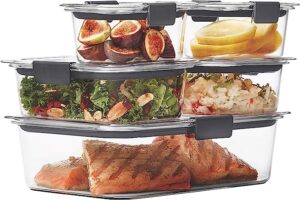
This is a clean and stylish set with BPA-free Tritan lids and bases with 360-degree clarity. The containers have airtight seals and secure latches that prevent spills and leaks. Built-in vents under latches allow splatter-resistant microwaving with the lid on. The containers stack perfectly to one another to save space and stay organized in the pantry or fridge.
Safe for the dishwasher, microwave, and freezer. The set includes two 1.3-cups, two 3.2-cups, and one 9.6-cup container, plus lids for all.
Label and date your containers
This is the fun part and I often get my grandchildren to help me. They love labelling with fancy writing and even some drawings! Label each container with the name of the dish and the date it was made. This will help you keep track of what you have and when it was made.
500 Freezer / Refrigerator Food Labels
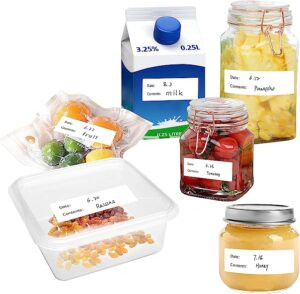
Easy to use labels in a roll of 500 – it will last for a long time! The labels are laminated with high density water and oil resistance foil. Fill them in, peel off and stick. They are safe for the refrigerator and the freezer. When you peel them off, there will be no sticky residue left, so you can use them on glass and plastic containers again that you want to reuse.
Cooking in bulk is great if you are planning on going camping. You can take all your frozen food along in a camping freezer. If you need a great camping kettle take a look at my top choices of best camping kettles
Store food at the right temperature
Always store food in the refrigerator or freezer at the right temperature. The temperature should be below 40°F in the refrigerator and below 0°F in the freezer.
Reheat food properly
When reheating leftovers, be sure to heat them to a temperature of 165°F. This will kill any bacteria that may have formed.
Use leftovers within a safe time frame
It’s important to use leftovers within a safe time frame to prevent food poisoning. As a general rule, refrigerated leftovers should be used within 4 days and frozen leftovers should be used within 6 months.
Freeze food properly
When freezing food, be sure to use airtight containers and wrap food tightly in plastic wrap or aluminum foil. This will help prevent freezer burn.

Your fridge won’t look like this – but you get the idea of FREEZING!
Defrost food safely
To defrost food, transfer it to the refrigerator and let it thaw slowly. Do not defrost food at room temperature, as this can encourage the growth of bacteria.
Know what not to freeze
Certain foods are not suitable for freezing –
Salad greens: Leafy greens, such as lettuce and spinach, do not freeze well and become wilted and mushy when thawed.
Fried foods: Fried foods, such as French fries and fried chicken, can become soggy and lose their crispy texture when frozen.
Dairy products: Dairy products, such as milk, cream, and sour cream, can separate and become watery when frozen.
Cucumbers: Cucumbers contain a lot of water, which can cause them to become soft and mushy when frozen.
Raw potatoes: Raw potatoes, including white and sweet potatoes, can become discolored and develop an off-flavor when frozen. It’s better to cook potatoes before freezing.
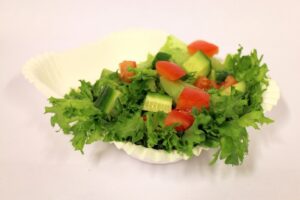
The take-away
By following these tips, you can cook in bulk and store leftovers with confidence, knowing that your food is fresh, safe, and delicious.
Make sure you are choosing high quality containers. Buying cheap is not ideal for storing foods and can even result in health issues.
10-Pack Glass Food Storage Containers with Lids
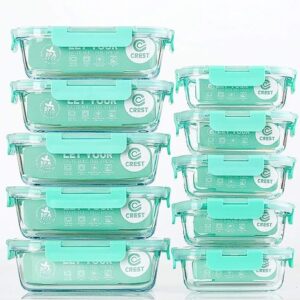
This set ticks all the boxes – BPA-free, eco-friendly, dishwasher-safe, freezer-safe, and microwave-safe. The glass storage containers are made from high quality borosilicate glass, which are oven safe to over 700℉. They are also leak-proof and air-tight, so you won’t have any unwanted spills. I love that they are stackable so they take up less space and are easy to label and organize.
Fun Color Kettles
Add some color and fun to your kitchen décor theme with a colored stovetop kettle. Colors are known to change your mood and create a…
Best Counter Top Toaster Ovens
Are you a toast fanatic and have a big family? Or do you love inviting friends over for meals? Your 2 slice toaster or 4…
Frozen Toaster Treats
Why not get creative and use your toaster for something far more exciting than bread? My grandkids love these treats and they are so easy…
Best 2 Slice Toasters
Whether you are rushing to make toast before work, or enjoying a lazy Sunday perfecting your smoked salmon and cream cheese toast, you need a…

